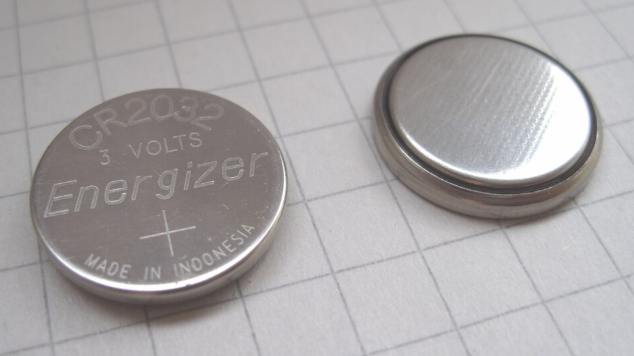CR2450 vs CR2032 Batteries: Choose Right & Avoid Damage
You're holding a dead key fob. That flat battery inside? Probably a CR2032. Sometimes it's thicker - that's the CR2450. They're not interchangeable. Choose wrong, and your device dies early. Or breaks permanently. Let's cut through the specs to what actually matters in real life.
Thickness Changes Everything
Imagine two coins stacked together. That's a CR2450 at 5.0mm thick. Now picture a single coin. That's the CR2032 at 3.2mm. That 1.8mm difference decides where they fit. Most watches and computer motherboards demand the slim CR2032. Forcing in a thicker CR2450 bends metal contacts. Worse, pressure cracks the battery casing. Like when my neighbor ruined his garage remote last winter. The repair cost tripled because he ignored this.

Power Storage Isn't Equal
Here's what manufacturers won't tell you: That slim CR2032 holds about 220 mAh of juice. Enough for a year in your car key. The chunkier CR2450 packs 620 mAh - nearly triple. Why? More interior space means more power chemicals. My diabetic friend proved this. Her glucose meter killed CR2032s every 6 months. Switching to CR2450 gave her 28 months of steady operation. Just remember - extra power needs extra physical space.
Voltage Tells Hidden Truths
Both claim "3 volts" on the label. Reality differs under pressure. Try powering a blinking pet collar. A CR2032 dims noticeably after 90 days. The CR2450 keeps shining bright for 8+ months. Medical devices expose this harshest. Glucose meters demand steady voltage. CR2032s often trigger false "low battery" warnings while still holding charge. CR2450's stable discharge curve prevents this.
Where Each Earns Its Keep
Use CR2032s for space-limited, low-power jobs. Your computer's motherboard battery? Always CR2032. Basic key fobs and kitchen scales thrive on them. They're cheap and everywhere - grab them at gas stations for $1. Expect 2-4 years in these light-duty roles.
Choose CR2450s when power demands spike. That BMW key with the LCD screen? Pure CR2450 territory. Medical monitors, industrial sensors, and wireless trail cameras need its muscle. You'll pay $3-$5 at hardware stores, but get 5-10 years of service. Like the wildlife camera in my backyard - still snapping photos after 4 winters on one CR2450.
The Cost Trap
CR2032s seem cheaper upfront. Two bucks at the drugstore feels painless. But my friend's smart lock chewed through three CR2032s in 18 months. Switching to a $4 CR2450 gave him 3+ years. Calculate long-term: CR2450 delivers triple the power per dollar.
Weather Tests Them Differently
Phoenix summer turns car dashboards into ovens. CR2032s start leaking at 140°F (60°C). CR2450s withstand 185°F (85°C). Minnesota winters reveal another gap. CR2032s fail below -22°F (-30°C). CR2450s operate at -40°F/C - the point where Fahrenheit and Celsius meet. That's why Canada's parking meters standardize on CR2450s.
Brands Make or Break Reliability
Skip discount bin batteries. I tested no-name CR2032s labeled "240mAh." Most died at 180mAh. Three leaked within a year. Pay extra for Panasonic, Energizer, or Duracell. Their quality control matters when batteries power pacemakers or fire alarms.
Swapping Risks Disaster
Can you substitute CR2450 for CR2032? Sometimes. My garage opener accepted it with extra space. But when Sarah forced one into her slim pedometer, the casing cracked after two weeks. Battery acid destroyed the $80 device. Rule: If it doesn't drop in smoothly, stop immediately.
Disposal Done Right
These contain toxic lithium. Never trash them. Tape both sides with masking tape first - prevents fires in collection bins. Home Depot and Best Offer free drop-offs. One battery contaminates 6,000 gallons of groundwater. My park ranger cousin sees the damage yearly.
Real Failure Stories
"Jake learned the hard way with his smoke alarm. Generic CR2032s died after 11 months. His cat knocked over a candle during the dead period. Now he uses Panasonic CR2450s and checks them every Christmas.
Maria's thermostat failure taught another lesson. A leaking CR2032 corroded the terminals. The $15 battery replacement became a $120 HVAC service call."
Choosing Without Regret
First, measure your battery compartment depth. Under 4mm? CR2032 is your only option. Second, consider power hunger. Constant beeping or blinking? Spring for CR2450. Third, evaluate environment. Outdoor or automotive use? CR2450 handles extremes. Finally, check the manual. If it specifies a code, obey it.
The Bottom Line
Keep CR2032s for everyday gadgets. Remote controls, bathroom scales, and cheap toys won't strain them. Buy multipacks to save.
Reserve CR2450s for critical roles. Medical devices, security systems, and car electronics deserve its robustness. Pay the premium for safety.
Remember that thickness difference. 3.2mm versus 5.0mm seems small until it breaks your device. Remember the power gap. 220 mAh keeps things running; 620 mAh makes them last. Match the battery to the job, and your gear will thank you for years.









